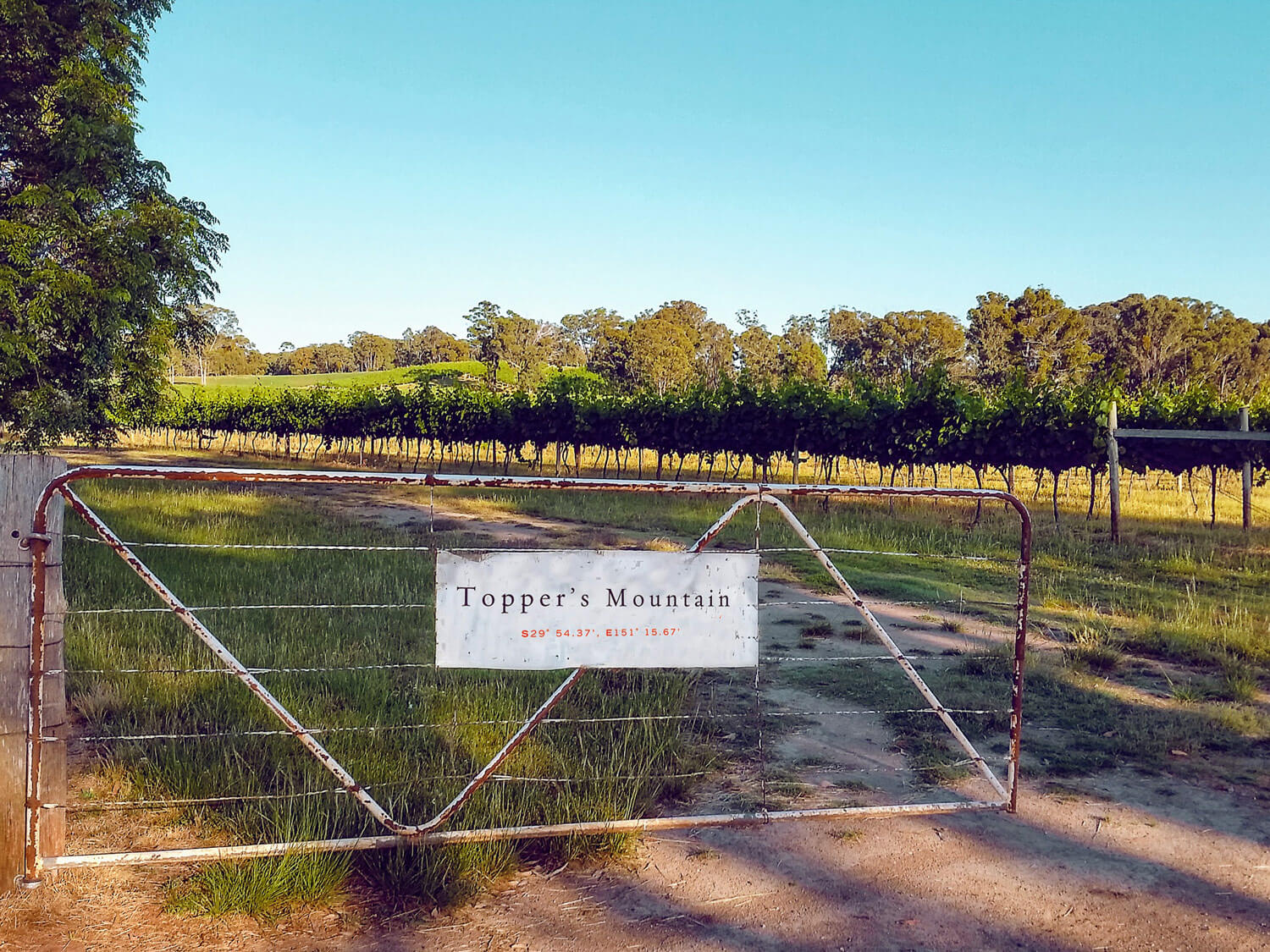There are hundreds of wine shows. There are dozens of winemakers awards. Why is that so when the REAL hero is the vineyard, the place, the terroir and the people working hard to help the grapes ripen often against the odds of nature? No awards for them…
…or yes? Young Gun of Wine started to pay attention to the place where the grapes come from creating ‘The Vineyard of the Year’ award. It was great to see that our little ten hectare plot of rare varieties which went through hell and came back in the last few years made it to the 2021 final list. Besides the place itself this is a great appreciation of the work of Scott & Jo – the hard core of our vineyard team!
Here is what Young Gun of Wine wrote about Topper’s Mountain vineyard:
Mark Kirkby’s Topper’s Mountain Vineyard was planted over two years to an eclectic mix of 20 grape varieties in the elevated cool of New South Wale’s New England region. Over two decades, the near 10-hectare vineyard has seen many varieties removed with almost as many taking their place, searching for the best vine-to-site matches. The viticultural approach is low impact, with sheep grazing amongst the vines through the cooler months and under-vine slashing in spring. The estate wines consist of varietal bottlings and field blends, some whites with skin contact and some reds with extended macerations, and all with sulphur as the only addition.
The New England Australia wine region extends from New South Wales’ border with Queensland south to about the same latitude as Port Macquarie, with Tamworth just outside its fringe to the west. Being so far north, it’s perhaps not an area that many may immediately conjure up images of cool climate vineyards, but the area offers just that. Indeed, on the edge of the Great Dividing Range, it has some of the highest vineyards (including the highest) and coolest in the country. Topper’s Mountain is not quite the loftiest site, but at 880–915 metres above sea level, it is amongst a handful of vineyards around that altitude in the country.
The New England area was one of the pioneering wine regions of the country, with George Wyndham planting vines – as well as other crops and running livestock – there in 1845 after an economic crisis hit his Hunter Valley property, Dalwood. He did so with considerable success, if the industry there did not ultimately survive into the mid 20th century. When Mark Kirkby planted there in 2000, he named his property, which was part of Wyndham’s original holding, after the local Topper brothers who were employed at the property back in the day.
“We have deep, free-draining ochre soils of volcanic origin at high altitude. This intersection of soil type in cool climate areas at this altitude is very rare in Australia. We believe that the less we intervene in the winemaking, the more likely it is that the core attributes of wines from our little bit of terroir heaven will become more obvious and shine through from vintage to vintage.”
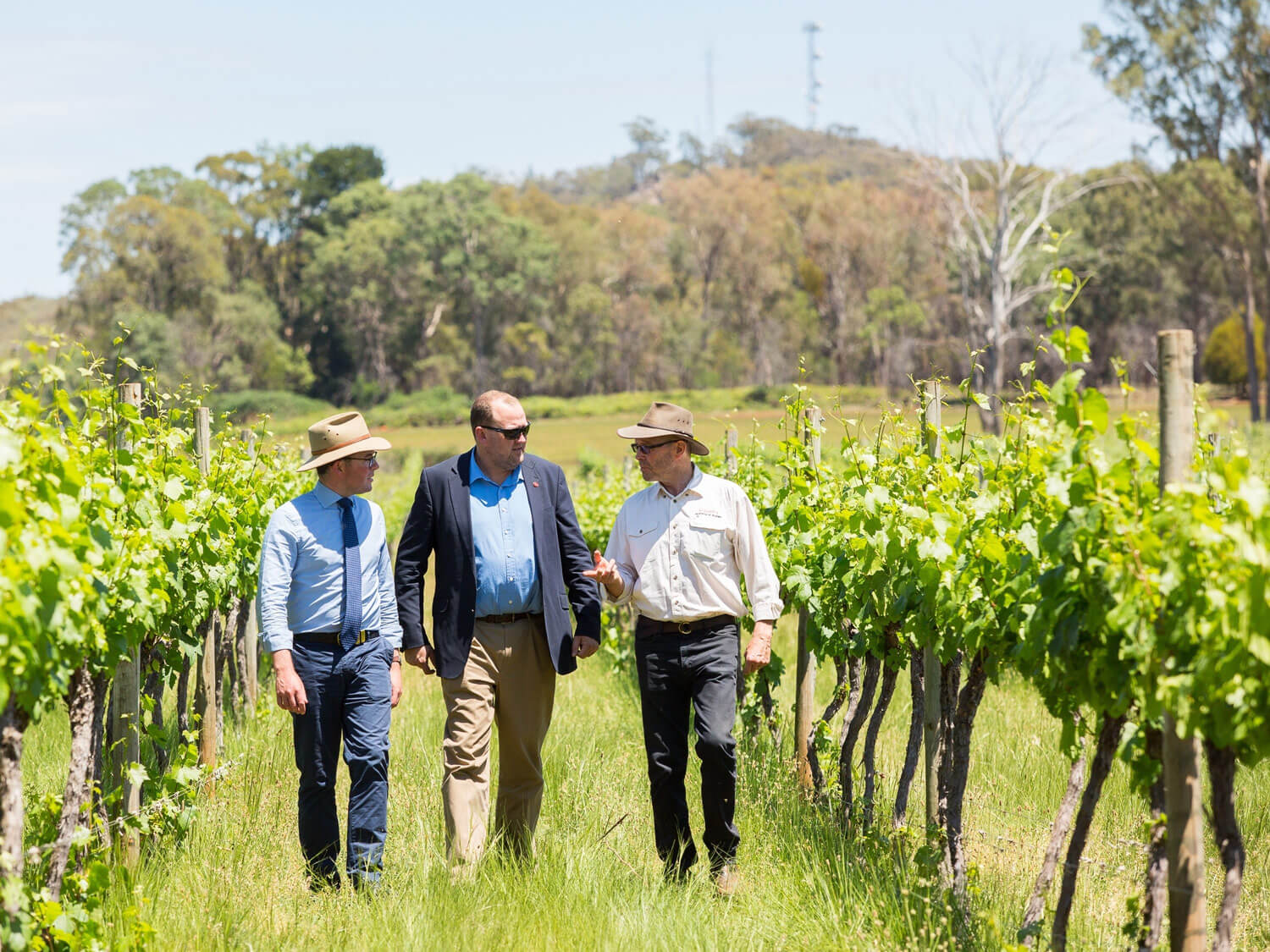
To look at the varietal makeup of Kirkby’s site – which is remote with no grape-growing neighbours to speak of – it looks very much the modern project, with a raft of ‘alternative’ varieties alongside those more familiar. In fact, Kirkby planted 20 varieties in a “fruit salad” block to test the best vines to site (which is very similar to how the pioneering vineyards were planted, including those of Wyndham) with eight varieties being relegated, mainly due to a lack of resistance to botrytis – a constant challenge with the high rainfall and cool conditions.
With much grafting occurring since the vines were planted between 2000 and ’02, Topper’s Mountain currently has tempranillo, nebbiolo, sauvignon blanc, gewürztraminer, tannat, petit manseng, chardonnay, pinotage, tinta cão, touriga nacional, pinot noir, pinot blanc, viognier, shiraz, verdejo and grüner veltliner in the ground across the 9.8-hectare site. Kirkby is also still in the process of restoring and replanting those vines damaged by the 2019 bushfires that tore through the region.
While the Topper’s Mountain site is a cool one, primarily a function of elevation, Kirkby also planted his vines with 90 per cent having an east to west orientation, rather than the more common north to south that maximises sun exposure. That foresight has gone some way to managing the earlier seasons that are being experienced in the region – and everywhere else. To further combat this, Kirkby is expanding the presence of their later ripening varieties, such as petit manseng, verdejo, nebbiolo, tannat, touriga and gewürztraminer.
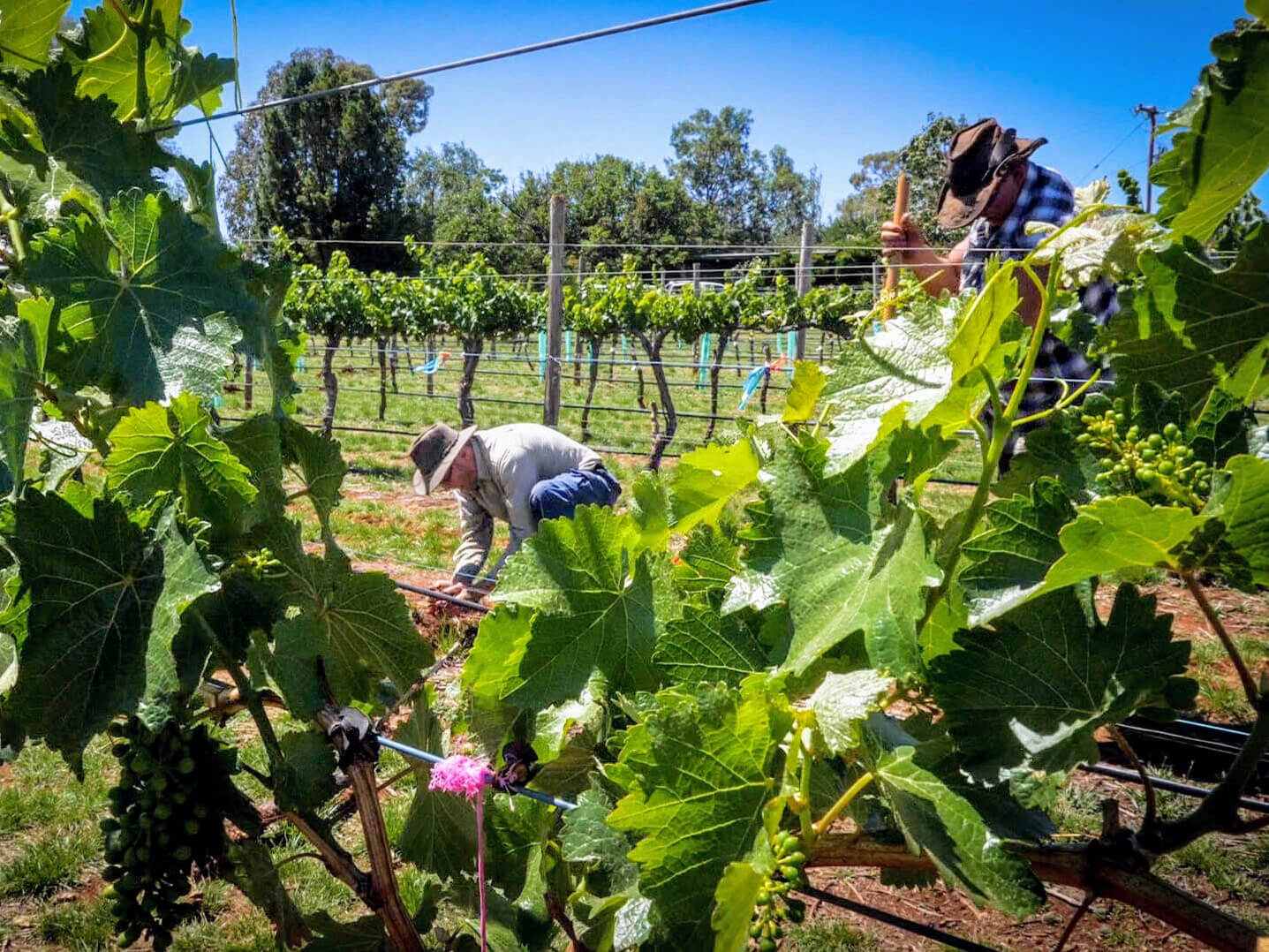
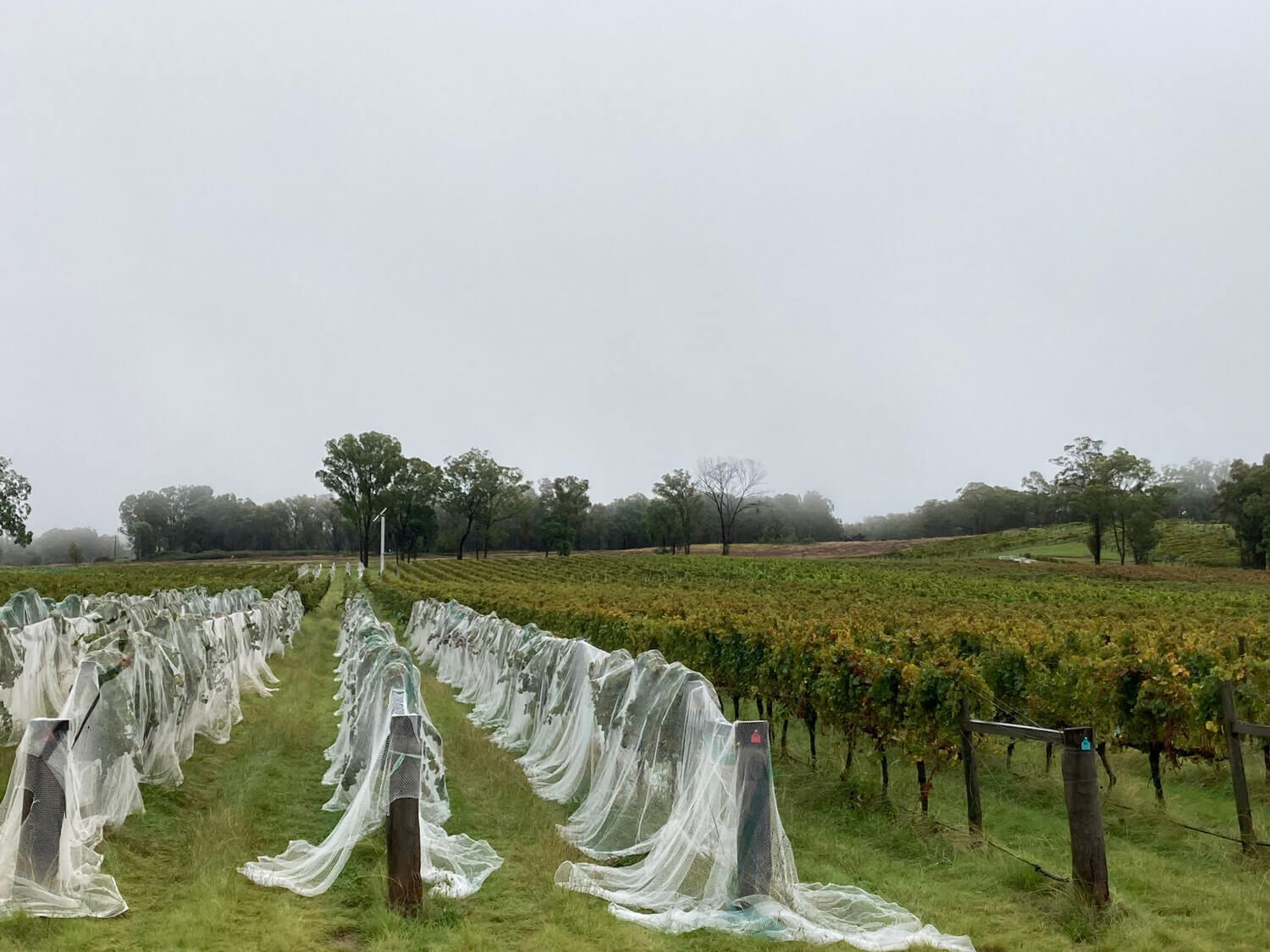
Kirkby has not used pesticides on the site since 2002, instead looking to a more natural approach. “From the planting of the vineyard in 2000 and ’02, I adopted the concept of integrated pest management that ties in well with our high growing-season rainfall,” he says. “It’s not management really – it’s more like non-management. Just keep the inter-row as diverse as possible, don’t do anything to hinder them and let the local predators sort it out.”
Insecticides for LBAM (light brown apple moth), a common cool-climate problem pest, and other invasive species have been avoided since the vineyard was planted. “The only exception to this came in the weeks after we planted in spring 2002,” Kirkby says. “We got an infestation of cut worms – caterpillars that live in the soil and come out at night to climb up the young vines and eat the few leaves the vines have in that critical first couple of weeks after planting before they start to grow vigorously.”
That intervention shows a practical side to Kirkby, as does his management of new and recovering vines. Synthetic fertilisers and pesticides have been shelved but minimal herbicides are being used in those fledgling sections, but only until he can operate his under-vine slasher around them. “Currently the re-shoots and replants from the 2019 bushfire are still too small to properly operate the sensor to retract the outrigger module,” he says. “It will take another couple of years before they are big and strong enough to operate the mechanism.”
The 2019 bushfire has also seen increasing numbers of grapevine moth caterpillars. “Something must be bit out of kilter, so this year we’ll have to break with tradition and do something about the GMC,” Kirkby says. That break from standard practice is hardly an aggressive intervention, though. “This will entail applying DiPel, which is an organic preparation of a live soil-borne bacteria (Bacillus thuringiensis) and its toxins that kill caterpillars but doesn’t affect other organisms.” That treatment sits within an organic approach, with the vineyard’s Hill of Dreams section (the other is called The Flat) farmed organically (not certified) since 2018.
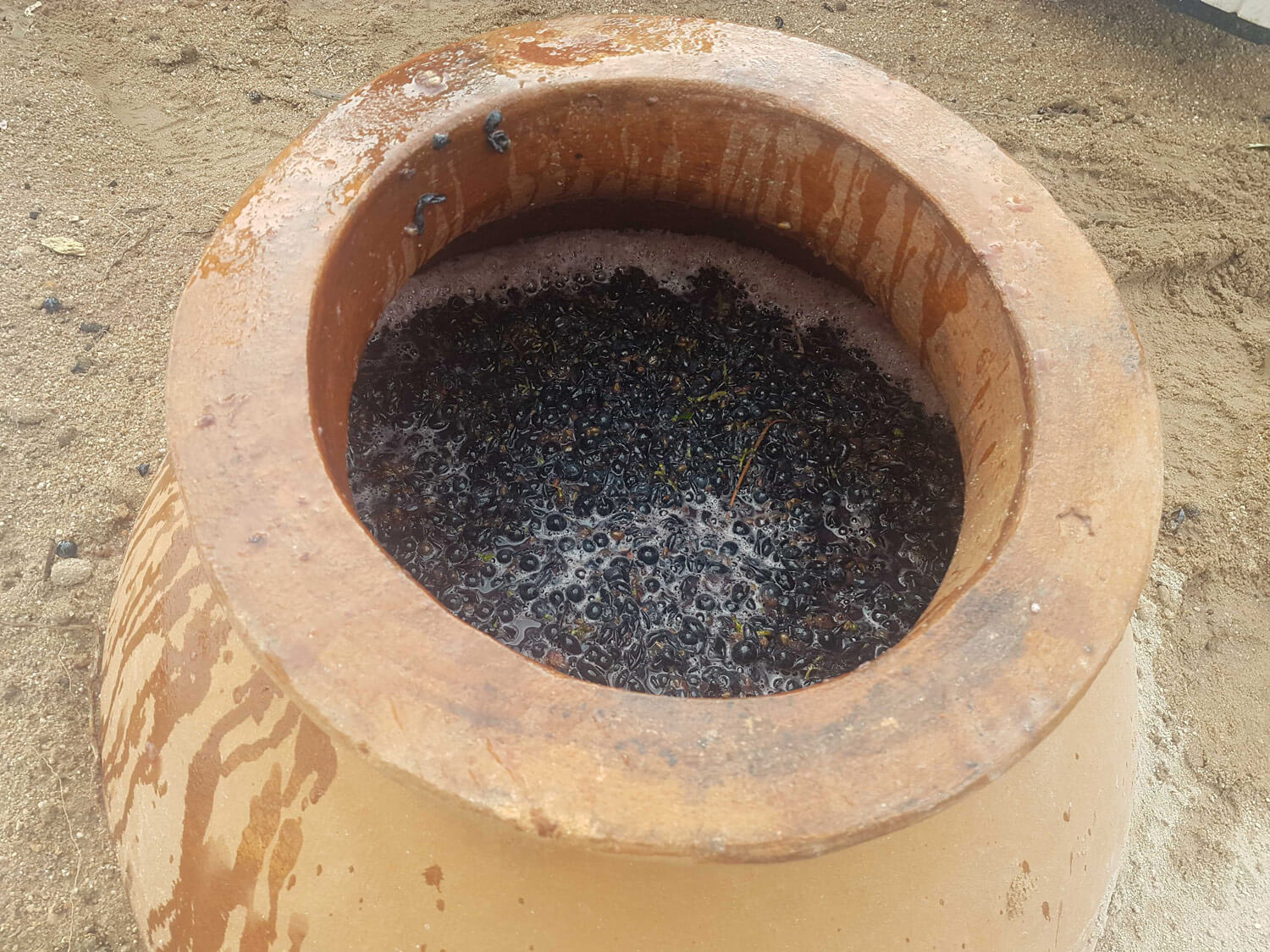
Solar panels with a storage battery have been installed to power the new cellar door, as well as offset other fossil fuel use with power that is fed back into the grid. Aside from being a showcase for the Topper’s Mountain wines, Kirkby also sees the cellar door as serving another vital function. “’Social license’ is a term that was unheard of until a few years ago,” he says. “Our cellar door invites visitors into our lives… Part of our role is to educate people how and why we do things, and that most viticulturists in particular, and farmers in general, think of themselves as more than owners or occupiers of a piece of land but as custodians… The social license is us helping the urban-dwellers understanding what we do and securing their support to help us better look after the land while producing wines that they want to drink.”
That responsibility extends outside the fence line, too. “It’s very early days yet and a very grand vision, but I’d love to be able to establish a feral-proof area including the northern part of Topper’s Mountain and the adjacent Tingha Plateau Conservation Area immediately to our west,” says Kirkby. “This area would total about 1,800 hectares and would be an excellent reserve for large numbers of vulnerable, endangered or locally extinct New England fauna and flora.”
Kirkby is in the early stages of the process, but it would entail corralling 60 per cent of his property to preserve and rehabilitate habitat for local populations of quolls, bilbies, bandicoots, wallabies, possums, gliders, frogs, birds and Tasmanian devils, which have been reintroduced to elevated areas of New South Wales that have a similar climate to Tasmania.
In the winery, a light-handed approach is taken, with low intervention the mantra. “Our aim is to let the wines choose their own equilibrium once we’ve picked them, not have them forced to places they don’t want to be by winemakers,” says Kirkby. That may involve blending more acidic varieties with ones less so to create balance, meaning no tartaric acid additions are employed. Most wines are un-fined and unfiltered, and the only additive is a minimal sulphur at bottling.
There is also a move to extended contact for reds and skin contact for some whites, with a blend of touriga nacional, tinto cão and tinta roriz (tempranillo) that spent 180 days on skins in qvevri (amphora) debuting in the 2018 vintage. On the white side, a blend of sauvignon blanc, verdejo, grüner veltliner comes off the gravelly Hill of Dreams section and is fermented on skins, then bottled un-fined and unfiltered.
“We have deep, free-draining ochre soils of volcanic origin at high altitude,” says Kirkby. “This intersection of soil type in cool climate areas at this altitude is very rare in Australia. The only other similar areas that I’m aware of are the highest vineyards on Mt Canobolas at Orange and the Whitlands Plateau in Victoria. We believe that the less we intervene in the winemaking, the more likely it is that the core attributes of wines from our little bit of terroir heaven will become more obvious and shine through from vintage to vintage.”
